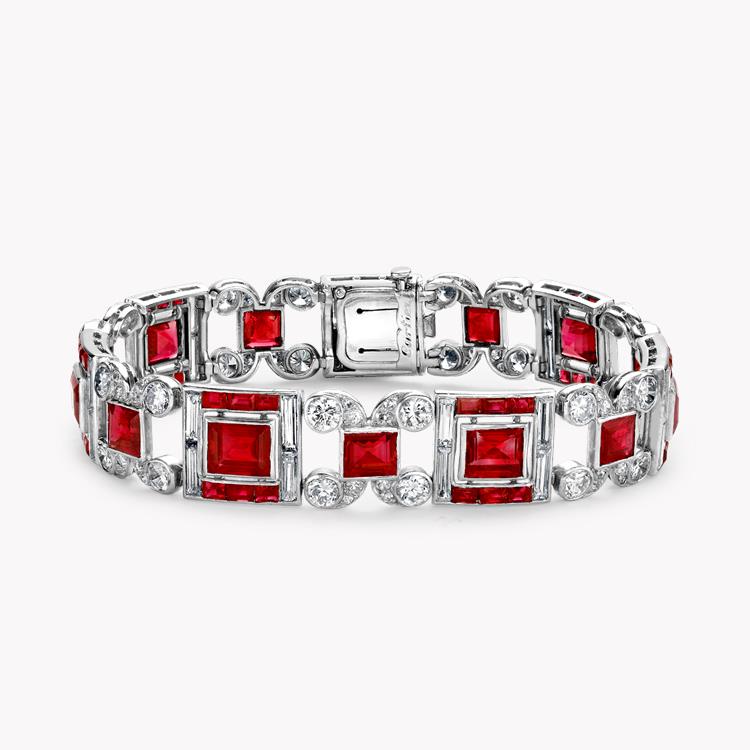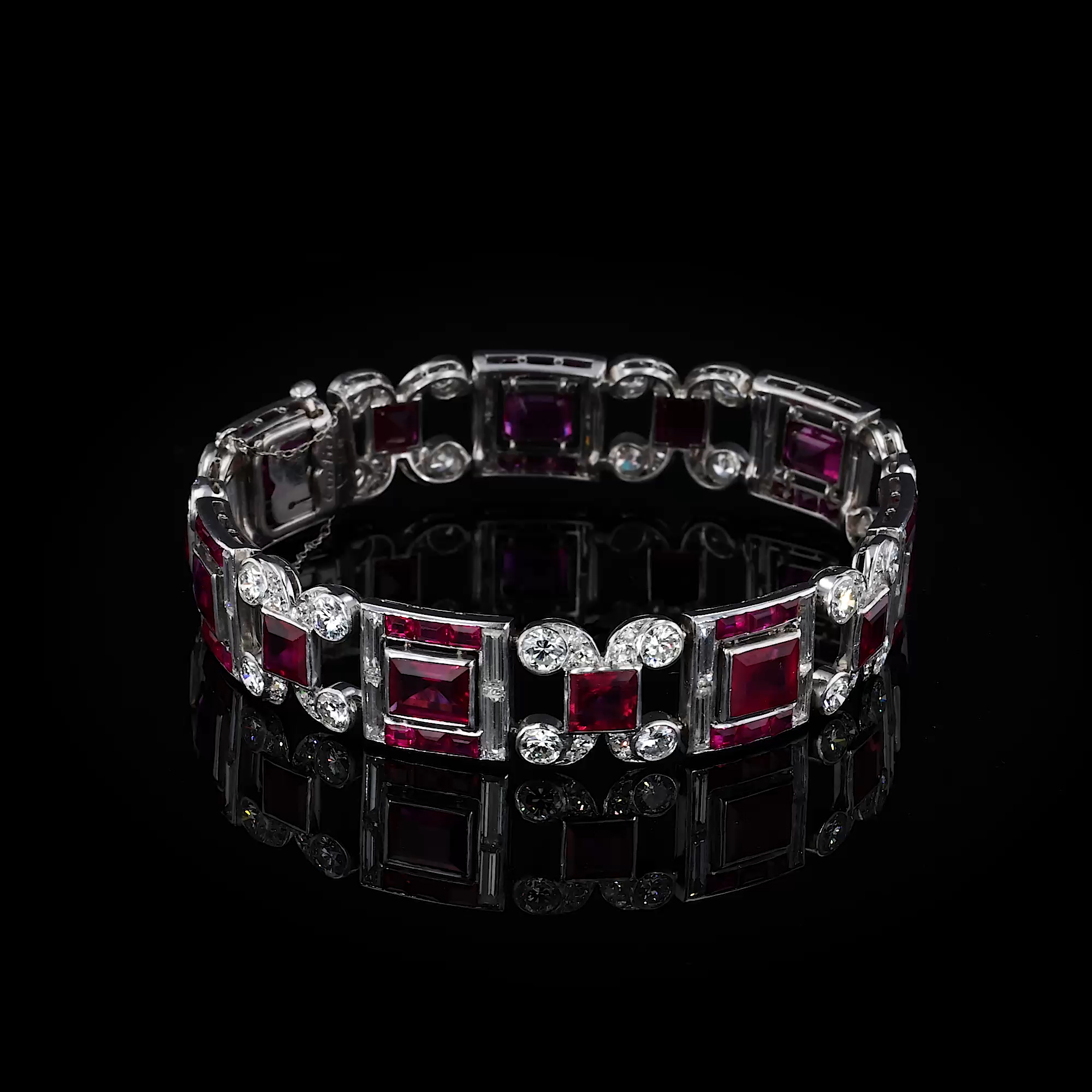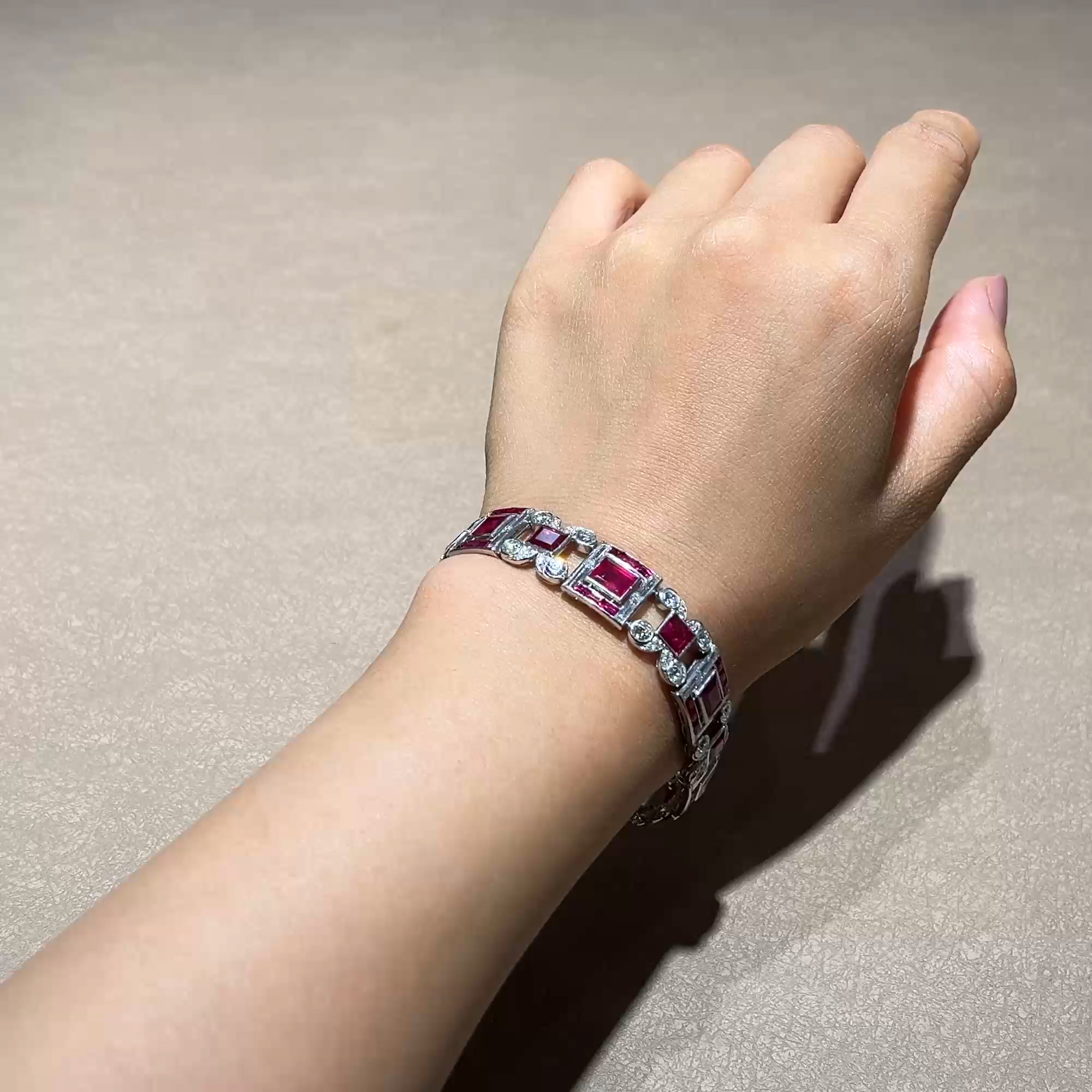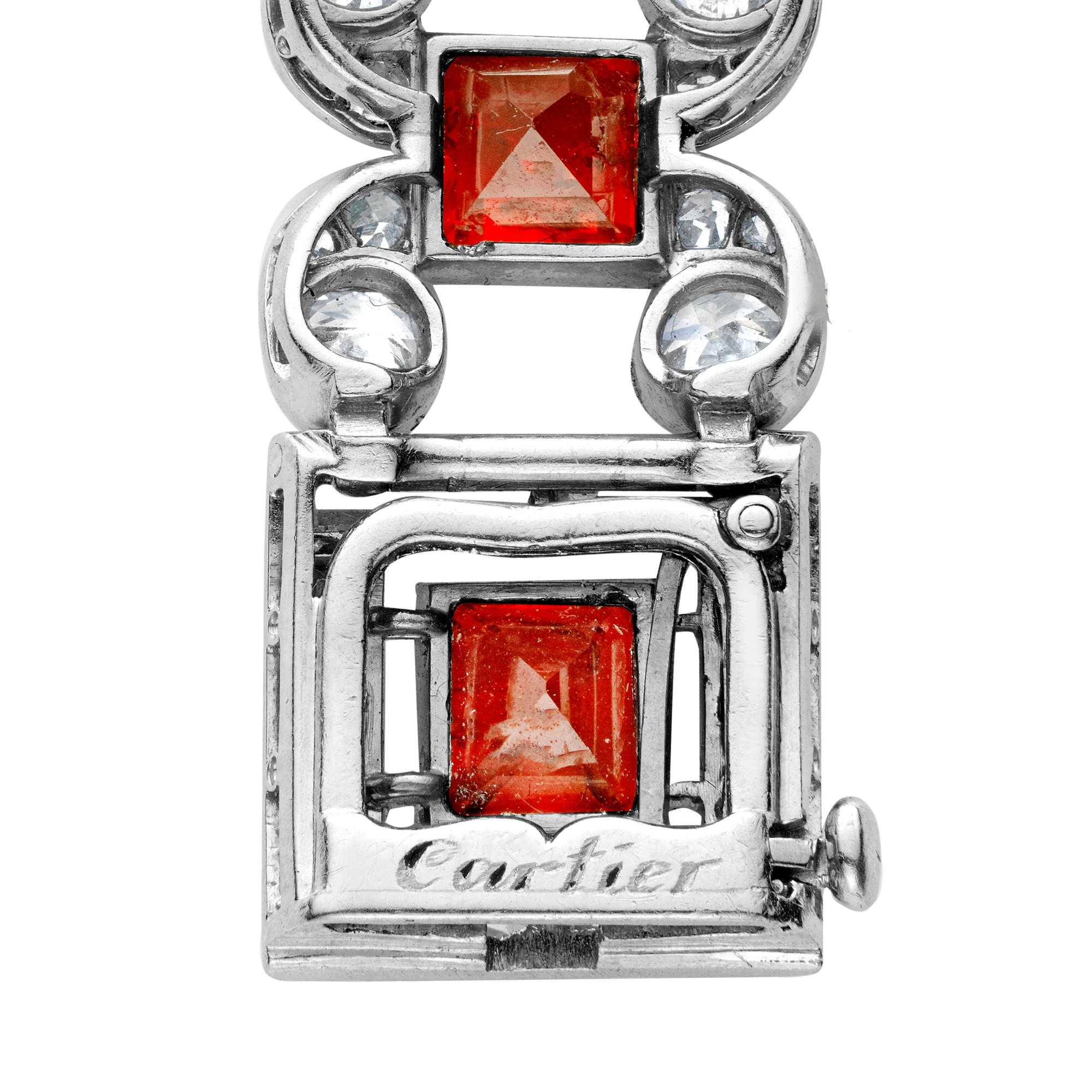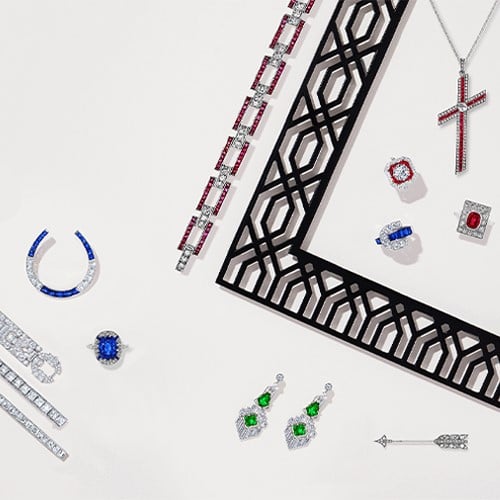Art Deco Cartier Burmese Ruby & Diamond Bracelet in Platinum and 18ct White Gold
Square Cut
Description
Founded in Paris in 1847 the rich and illustrious history of the House of Cartier has defined the jewellery world for nearly two hundred years. Still regarded as a byword for luxury the House was famously referred to as “the jeweller of kings and the king of jewellers” by King Edward VII in the early 20th-century. The house was as its peak when it was owned and run by the founding family, from 1847 to 1964. This important striking slim plaque bracelet (c. 1930) combines vibrant rich red square cut unheated Burmese rubies with sparkling brilliant and baguette cut diamonds. Openwork links draw the eye in alternating square and stylised “x” forms with a central line of square cut rubies commanding attention. The colour red will forever be associated with Cartier, and it is no coincidence that the rubies that feature in their creations have a magical quality. Burma or Myanmar, is a country that is renowned for its deposits of extraordinary gemstones. The famous Mogok mines are now largely exhausted, so the best quality Burmese rubies are found in the finest antique pieces. Intricate diamond and gemstone set slim and wide bracelets became hugely popular during this time, as short sleeved fashions exposed the arms. This important piece is accompanied by its original Cartier box.
Specifications
| Creator | Cartier |
| Material | Platinum & 18CT White Gold |
| Principal Stone | Ruby |
| Principal Stone Shape i | Square |
| Princip Stone Weight i | 16.50 |
| Secondary Stone | Diamond |
| Number of Gemstones | 56 |
| Total Weight i | 16.50 |
| Treatment | Non Heated |
| Stone Origin | Burma |
| Age | 1911 - 1940 (Art Deco) |
| Bracelet Length | 19cm |
| Bracelet Width | 12.1mm |
| Clasp Type | Hidden |
| Certificate | Gemmological Certification Ser |
| PRAGNELL REFERENCE | 1152132 |
